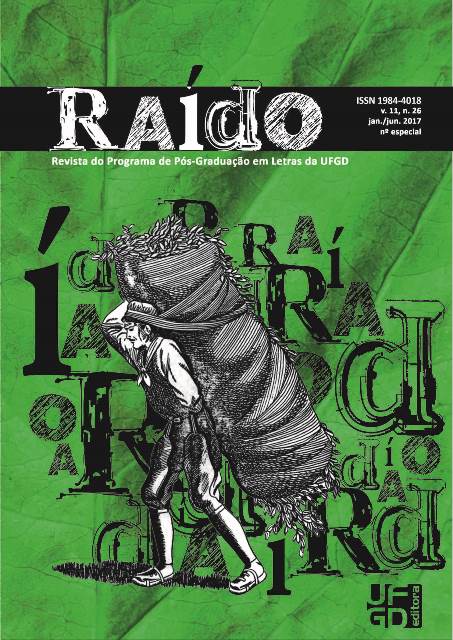The diagnosis of brazilian underdevelopment in <em>O cortiço</em>: does hybridism lead to degeneration?
DOI:
https://doi.org/10.30612/raido.v11i26.5088Keywords:
Naturalism. Brazil. Women. Hybridity.Abstract
Since 1822, racial and ethnic diversity predominated discussions related to Brazilian national identity. In the literary field, racial mixture dominated intellectual discourses and influenced the literary production. Writers were grappled with Brazil’s global position and vulnerability in relation to modernization. For this reason, Brazilian intellects attempted to determine the “supposed” causes of the Brazilian backwardness. Aluísio de Azevedo, one of the more prominent writers of Brazilian Naturalism, also seemed to be concerned with the Brazilian underdevelopment, as it is evident in one of his most important work, O cortiço. In this context, the aim of this study is to analyze what would be the cause of the Brazilian underdevelopment. As a conclusion, it can be stated that there is a strong connection between economic development and the white race, as well as between underdevelopment and miscegenation, represented respectively by Portugal and the white male characters and Brazil and its female hybrid characters. The couples Romão/Betoleza and Jerônimo/Rita symbolize the old colonial order showing that despite the fact Brazil has gained its political independence from Portugal, the colonial economic ideals persist.
Downloads
Downloads
Published
How to Cite
Issue
Section
License
Os autores devem aceitar as normas de publicação ao submeterem a revista, bem como, concordam com os seguintes termos:
(a) O Conselho Editorial se reserva ao direito de efetuar, nos originais, alterações da Língua portuguesa para se manter o padrão culto da língua, respeitando, porém, o estilo dos autores.
(b) Autores mantém os direitos autorais e concedem à revista o direito de primeira publicação, com o trabalho simultaneamente licenciado sob a Atribuição-NãoComercial-CompartilhaIgual 3.0 Brasil (CC BY-NC-SA 3.0 BR) que permite: Compartilhar — copiar e redistribuir o material em qualquer suporte ou formato e Adaptar — remixar, transformar, e criar a partir do material. A CC BY-NC-SA 3.0 BR considera os termos seguintes:
- Atribuição — Você deve dar o crédito apropriado, prover um link para a licença e indicar se mudanças foram feitas. Você deve fazê-lo em qualquer circunstância razoável, mas de nenhuma maneira que sugira que o licenciante apoia você ou o seu uso.
- NãoComercial — Você não pode usar o material para fins comerciais.
- CompartilhaIgual — Se você remixar, transformar, ou criar a partir do material, tem de distribuir as suas contribuições sob a mesma licença que o original.
- Sem restrições adicionais — Você não pode aplicar termos jurídicos ou medidas de caráter tecnológico que restrinjam legalmente outros de fazerem algo que a licença permita.



